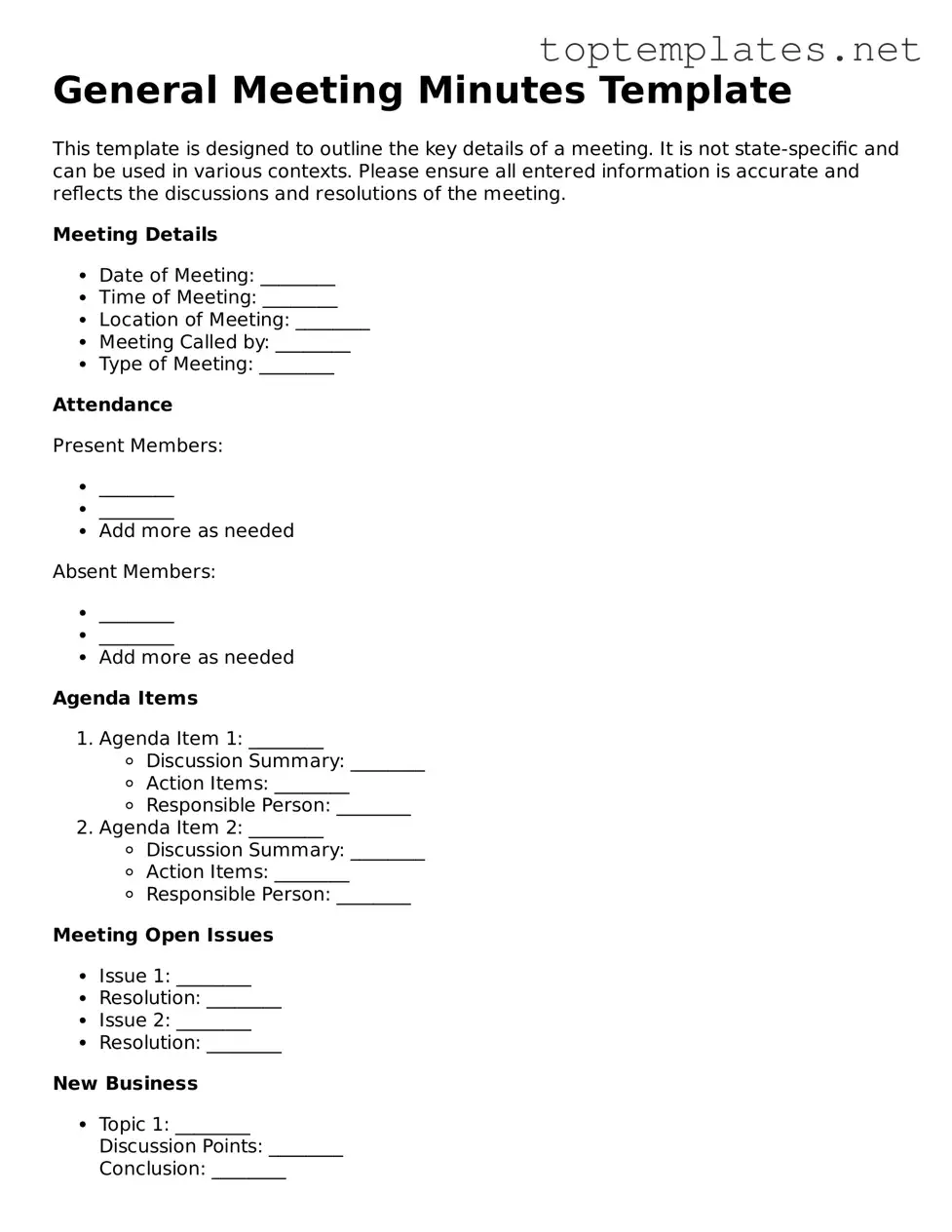What are Meeting Minutes?
Meeting minutes are a formal written summary of a meeting's discussions and decisions. They serve as an official and legal record of the meeting, including details on attendees, topics discussed, decisions made, and actions agreed upon. Minutes ensure accountability and provide a historical record for reference.
Why are Meeting Minutes important?
Meeting minutes are crucial for several reasons. They help keep track of decisions and actions that need to be taken, ensuring that attendees are aware of their responsibilities. They also serve as a point of reference to resolve any disputes or misunderstandings about what was decided during the meeting. Additionally, minutes can serve legal requirements, proving due diligence and decision-making processes for corporations.
Who is responsible for taking Meeting Minutes?
Typically, a designated secretary, clerk, or meeting facilitator is responsible for taking minutes during a meeting. However, any appointed attendee can perform this task if agreed upon by the meeting's participants. The key is that the person chosen should be attentive, detail-oriented, and possess good listening and writing skills.
What should be included in Meeting Minutes?
Effective meeting minutes should include the date, time, and location of the meeting; a list of attendees and absentees; topics discussed; decisions made; actions to be taken, including deadlines and responsible persons; and the meeting's adjournment time. It may also include the approval of previous meeting minutes.
How detailed should Meeting Minutes be?
The level of detail in meeting minutes can vary. The ideal is to strike a balance between being concise and including enough detail to accurately reflect the meeting's discussions and decisions. Avoiding verbatim accounts and focusing on key points, decisions, and actionable items usually works best.
Are there legal standards for Meeting Minutes?
Yes, especially for corporations and formal entities, there are legal standards governing meeting minutes. These standards often require that minutes are accurate, timely filed, and stored securely. They must provide a clear record of decisions and actions taken, serving as a legal document in regulatory reviews or audits.
How should Meeting Minutes be formatted?
There is no one-size-fits-all format for meeting minutes, but a clear and organized structure is essential. A typical format includes headings for each main section, bullet points or numbered lists for decisions and actions, and clear labels for topics discussed. Using a template consistent with previous minutes can help maintain continuity.
Can Meeting Minutes be corrected or amended?
Yes, meeting minutes can be corrected or amended. Amendments are usually proposed at the beginning of a subsequent meeting, discussed, and voted upon. The original minutes should retain their content, but a note of the amendment and the date it was made should be added for clarity and legal integrity.
Should Meeting Minutes be made public?
This depends on the nature of the meeting and the organization's policies. For public companies and some non-profits, certain meeting minutes might need to be made publicly available. In contrast, private entities may keep their minutes confidential. The decision to publish minutes should consider the legal and privacy implications.
How long should organizations retain Meeting Minutes?
Retention periods for meeting minutes vary depending on legal requirements and the type of organization. In general, it is advisable to keep them for as long as the organization exists as they serve as a legal record. For specific legal or compliance requirements, consulting with legal counsel is recommended to ensure adherence to relevant laws and regulations.
